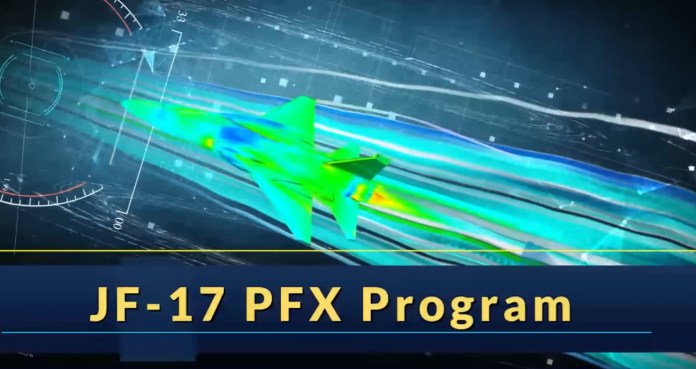SOURCE: AFI


The Pakistan Air Force’s (PAF) plans for the JF-17 fighter jet remain shrouded in some mystery. Earlier this year, the announcement of the JF-17 PFX program sparked speculation about the future of this workhorse aircraft. While details remain unclear, recent developments suggest the PAF is aiming for a significant upgrade.
In November 2023, the PAF inducted the most advanced variant of the JF-17 to date, the Block III. This version boasts improvements in maneuverability, range, and combat capabilities, solidifying the JF-17’s position as a vital part of the PAF’s arsenal.
The true nature of the JF-17 PFX program remains under wraps. However, recent reports hint at an ambitious undertaking. The PAF is reportedly collaborating with the Aviation Industry Corporation of China (AVIC) and PAC to develop an enlarged variant of the JF-17. This new iteration is speculated to target a Maximum Take-Off Weight (MTOW) similar to the Indian Tejas MkII program, which sits around 17.5 tons.
The current JF-17 has an MTOW of approximately 13,500 kg, placing it in the same class as the Tejas Mk1A. The Tejas MkII, however, represents a significant evolution from its predecessor. This similarity in approach has led some to believe that the JF-17 PFX might follow a similar path, aiming for a substantial leap in capabilities.
The PAF has yet to officially confirm the specifics of the JF-17 PFX program. Whether it will indeed mirror the Tejas MkII’s growth or take a different direction remains to be seen.
The JF-17 PFX program signifies the PAF’s commitment to the continued development of the JF-17 platform. If the speculations hold true, this project could usher in a new era for the aircraft, potentially matching the capabilities of its regional counterparts. However, with official details still pending, the true nature of the JF-17 PFX and its impact on the future of Pakistani airpower remain an intriguing puzzle.